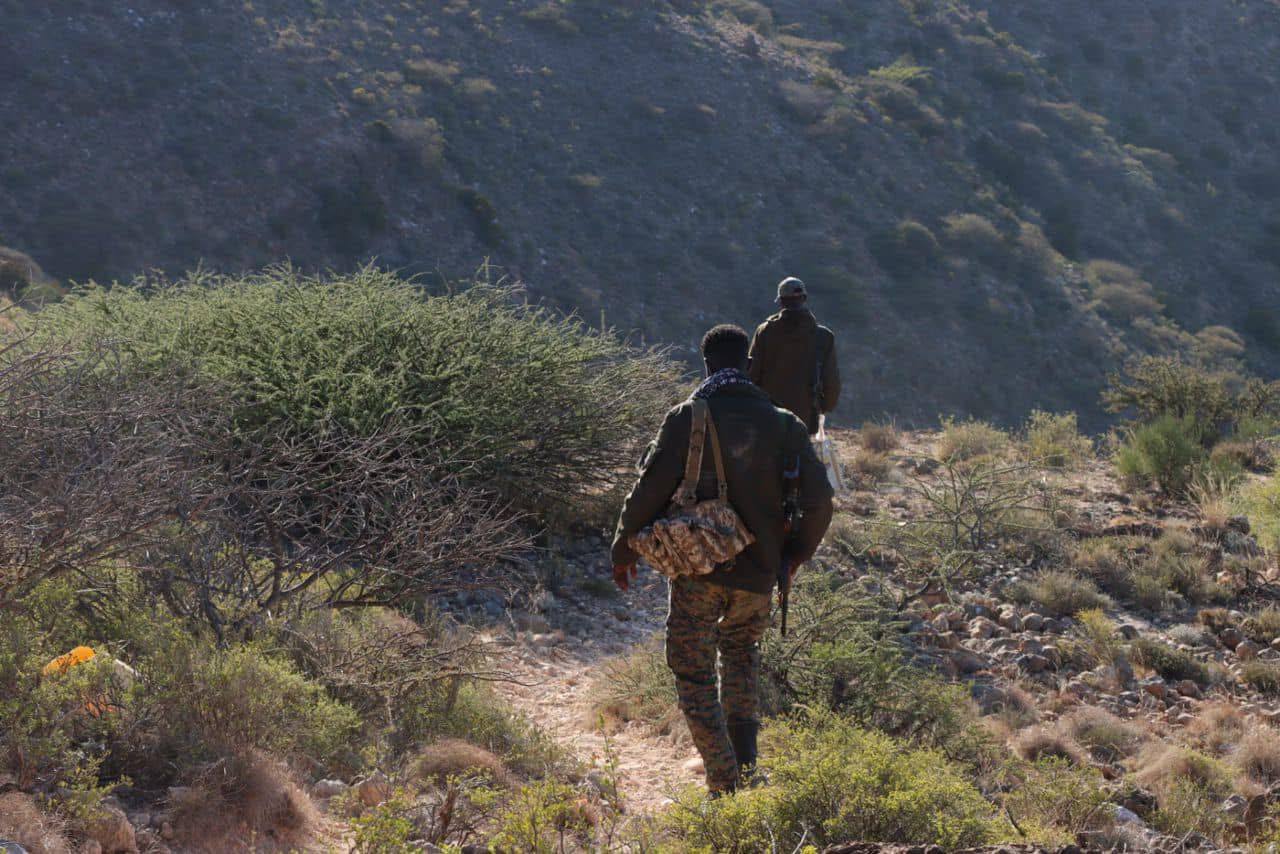As of February 8, 2025, with the battle against ISIS in Puntland entering its concluding but highly dangerous phases, Puntland State Forces face a critical juncture. ISIS fighters, now cornered in their remaining footholds in the Golis Mountains, are resorting to desperate guerrilla tactics, including ambushes, booby traps, and asymmetric warfare.
To achieve final victory while minimizing casualties, Puntland forces must adopt a multi-faceted strategy that combines tactical innovation, intelligence-driven operations, and community engagement. Here’s a roadmap for the best way forward:
1. Tactical Adjustments to Counter Guerrilla Warfare
Enhanced Training:
Puntland forces should undergo specialized training in counter-guerrilla warfare, focusing on detecting and neutralizing ambushes, improvised explosive devices (IEDs), and booby traps. Partnering with international trainers (e.g., from the UAE or private security firms) could provide expertise.
Small Unit Tactics:
Shift from large-scale operations to smaller, highly mobile units capable of navigating mountainous terrain and conducting precision strikes. This reduces the risk of mass casualties from ambushes.
Night Operations:
Conduct more operations under the cover of darkness to exploit ISIS’s reduced visibility and mobility at night. Night-vision equipment and thermal imaging technology would be critical for this.
2. Intelligence-Driven Operations
Local Intelligence Networks:
Strengthen collaboration with local communities to gather real-time intelligence on ISIS movements, hideouts, and supply routes. Incentivize informants with financial rewards or security guarantees.
Surveillance Technology:
Deploy drones and satellite imagery to monitor ISIS positions in the Golis Mountains. This reduces the need for risky ground reconnaissance and provides actionable intelligence for targeted strikes.
Interrogation and Defectors:
Focus on capturing and interrogating low-level ISIS fighters to extract information about their leadership, tactics, and supply chains. Encourage defections by offering amnesty to rank-and-file members.
3. Psychological and Information Warfare
Demoralize ISIS Fighters:
Use loudspeakers, radio broadcasts, and social media to highlight the futility of ISIS’s resistance and the inevitability of their defeat. Offer safe surrender terms to fighters willing to lay down their arms.
Counter-Propaganda:
Combat ISIS’s narrative by showcasing Puntland’s victories and the restoration of stability in liberated areas. Highlight the benefits of peace and development to win over local support.
4. Logistical and Medical Support
Medical Evacuation Plans:
Establish rapid medical evacuation protocols for injured soldiers, including forward-deployed field hospitals and airlift capabilities. This will reduce fatalities from ambushes and booby traps.
Supply Lines:
Secure and shorten supply lines to frontline troops to ensure they have adequate ammunition, food, and medical supplies. Use helicopters or drones for resupply in hard-to-reach areas.
5. Community Engagement and Stabilization
Win Hearts and Minds:
Provide humanitarian aid, rebuild infrastructure, and restore basic services in liberated areas to gain the trust of local communities. This reduces the likelihood of civilians supporting ISIS out of desperation.
Clan Reconciliation:
Address grievances among marginalized clans that ISIS has exploited for recruitment. Foster dialogue and inclusion to weaken ISIS’s local support base.
Local Militias:
Train and equip local militias to defend their communities against ISIS remnants. This creates a buffer zone and frees up Puntland forces for offensive operations.
6. Strategic Patience and Gradual Advances
Avoid Overextension:
Resist the urge to rush into ISIS-held areas without proper reconnaissance. Gradual, methodical advances will reduce casualties and prevent costly mistakes.
Clear and Hold:
Adopt a “clear and hold” strategy, where liberated areas are secured and stabilized before moving forward. This prevents ISIS from re-infiltrating captured territories.
7. International Support (Indirect
Targeted Airstrikes)
While Puntland lacks direct support from the SNA or ATMIS, it can lobby for targeted airstrikes by international partners (e.g., the U.S.) to degrade ISIS leadership and infrastructure.
Humanitarian Aid:
Seek international humanitarian assistance to address displacement and rebuild communities affected by the conflict. This will bolster Puntland’s legitimacy and stability.
8. Learning from Mistakes
After-Action Reviews:
Conduct thorough reviews of recent operations to identify tactical and strategic errors. Use these lessons to refine future plans and avoid repeating mistakes.
Adaptability:
Remain flexible and adapt to ISIS’s evolving tactics. Encourage frontline commanders to innovate and share best practices.
Conclusion
The final phase of the war against ISIS in Puntland is fraught with challenges, but victory is within reach if Puntland State Forces adopt a comprehensive, adaptive, and community-centered approach. By combining tactical precision, intelligence-driven operations, and efforts to win local support, Puntland can eliminate ISIS’s remaining footholds in the Golis Mountains while laying the groundwork for long-term stability. The key is to avoid overconfidence, learn from past mistakes, and prioritize the safety and well-being of both soldiers and civilians.
END
By Warsame Digital Media (WDM) | X: @ismailwarsame


COMMENTS